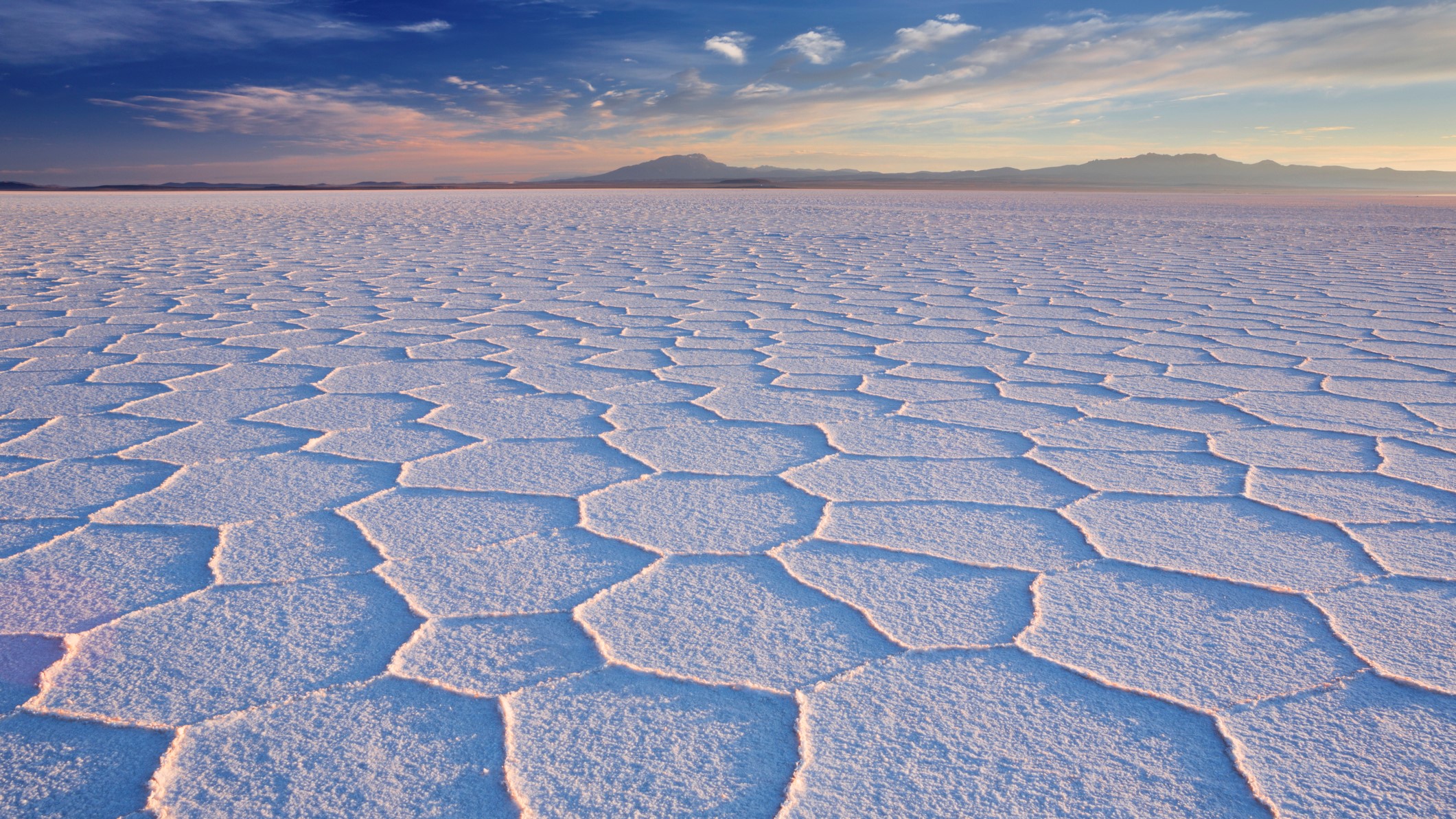Scientists solve mystery behind strange honeycomb pattern in salt deserts
Physicists have finally uncovered the mechanism behind the spectacular patchwork of hexagons on salt flats. The answer lies hidden beneath the crust and works like a donut-shaped radiator.

The mesmerizing honeycomb patterns found in salt deserts such as Badwater Basin in California's Death Valley and Salar de Uyuni in Bolivia have perplexed tourists and inspired sci-fi movie-makers for decades. Scientists, too, have struggled to elucidate the mechanism behind the iconic shapes.
Now, physicists think they've finally solved this natural puzzle.
"The fantastic landscape demands an explanation," Lucas Goehring, an associate professor of physics at Nottingham Trent University in England, said in a statement. "What we've shown is that a simple, plausible explanation is there, but hidden beneath the ground."
The answer lies in the groundwater beneath the salt crust, according to a study published Feb. 24 in the journal Physical Review X. In the study, researchers describe how layers of salty and less salty water circulate up and down in donut-shaped currents, which are squeezed together horizontally to form the regular pattern.
Previously, scientists suggested that the cracks and ridges form as the salt crust expands and dries out, bending and fragmenting under the strain.
Now, the researchers note that previous attempts to understand the iconic landscape didn't account for the uniform size of the hexagons, which are always 3 to 6 feet (1 to 2 meters) across, wherever in the world they are found.
Related: What's the largest desert in the world?
Sign up for the Live Science daily newsletter now
Get the world’s most fascinating discoveries delivered straight to your inbox.
The new study confirms the widely accepted idea that the geometric patterns are formed by a mechanism rooted in basic thermodynamics, similar to the movement of hot and cold water in a radiator or in a pot of boiling water. "The surface patterns reflect the slow overturning of salty water within the soil, a phenomenon somewhat like the convection cells that form in a thin layer of simmering water," Goehring said.
Salt deserts aren't as bone-dry as they seem. Beneath the salt crust sits a layer of extremely salty water, which can be reached by digging with your hands. The water evaporates in the hot summer months, leaving only a blanket of salt, some of which dissolves into the next layer of water. This layer is then more dense than the one below it, and the salty water sinks in a ring that surrounds fresher, less dense water rising to replace it. The water evaporates and leaves a salt residue, which dissolves into the top water layer again. The cycle repeats itself to form what scientists call a convection roll.
Research on salt deserts has focused either on these subsurface currents or on the crust. The new study argues that the two features interact and mirror each other to form the tessellations. Where the dense, salty surface water sinks, salt accumulates on the crust to form ridges. The salt crust grows more rapidly around the edges of each hexagon because it is in contact with saltier water than the middle.
Normally, a convection roll would adopt a circular donut shape. Because there are so many of them packed closely together on a salt flat, however, the rolls are squeezed against each other to form hexagons, the researchers said.
The authors present a convincing explanation for the striking pattern, Stuart King, a researcher at the University of Edinburgh in Scotland who did not participate in the study, told Live Science in an email. "It is well known that hexagonal patterns arise from convection and evaporation processes, [but] this paper connects that with the penetrative convection of the porous layer underneath, which seems very plausible as a wider mechanism driving the whole salt formation."
The scientists say their work was driven purely by curiosity. "Nature presents us with an obvious and fascinating puzzle that stimulates our curiosity and thereby prompts us to solve it — even without any direct further possibility of application in mind," study first author Jana Lasser, a postdoctoral researcher at Graz University of Technology in Austria, said in the statement.

Sascha is a U.K.-based staff writer at Live Science. She holds a bachelor’s degree in biology from the University of Southampton in England and a master’s degree in science communication from Imperial College London. Her work has appeared in The Guardian and the health website Zoe. Besides writing, she enjoys playing tennis, bread-making and browsing second-hand shops for hidden gems.











